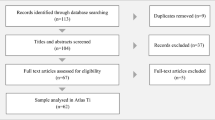Abstract
The right to water and sanitation has emerged from the penumbra of associated rights in the past few decades and now plays an important role in international debates. This right has emerged “from below”, through the efforts of social movements seeking transformation in the lives of the world’s poor, and it has been recognized “from above”, with major international actors such as the United Nations, international financial institutions, and even large corporate actors affirming its existence. As the obligations and entitlements inherent in this right are increasingly clarified, the role of interdisciplinary collaboration has never been more important. This short Commentary examines one such collaborative effort, led by the United Nations Joint Monitoring Programme, to devise post-2015 goals, targets, and indicators for water, sanitation, and hygiene. The Commentary calls for renewed partnerships to advance human rights-based policy among advocates, development practitioners, and water and sanitation experts from diverse scientific fields.

Similar content being viewed by others
Notes
There are ongoing debates over whether there are separate rights to water and sanitation. While I find the argument for two separate rights to be persuasive, this Commentary will treat the rights as a single unit for ease of reference. For a discussion of this issue, see Winkler (2012) and Meier et al. (2014).
While such collaborations are worth close examination, they are separate from the policy-focused collaborations discussed in this Commentary since they are aimed at directly assessing the status of a right as a legal matter, while policy collaborations are animated by human rights principles but do not purport to replace monitoring efforts or identify violations.
The author served as Rapporteur for the JMP Equity and Non-Discrimination Working Group.
This figure is reproduced from JMP (2012).
References
Alkire, S. (2013). A new household survey to catalyse the data revolution, http://post2015.org/2013/11/21/a-new-household-survey-to-catalyse-the-data-revolution/.
Bacon, L. (2013). A true data revolution would leave no one behind, http://post2015.org/2013/11/19/a-true-data-revolution-would-leave-no-one-behind/.
Centre on Housing Rights and Evictions (COHRE). (2005). Possible indicators for the right to water and sanitation.
Cointreau, M., & Subedi, M. (2013). My data revolution is not your data revolution, http://post2015.org/2013/11/07/my-data-revolution-is-not-your-data-revolution/.
de Albuquerque, C. (2012). Integrating non-discrimination and equality into the post-2015 development agenda for water, sanitation and hygiene, Report of the Special Rapporteur on the human right to safe drinking water and sanitation.
Felner, E. (2009). Closing the ‘escape hatch’: A toolkit to monitor the progressive realization of economic, social, and cultural rights. Journal of Human Rights Practice, 1, 402–435.
Flores, O., Giné, R., Pérez-Foguet, A., & Jiménez, A. (2013). Post-2015 WASH targets and indicators: A review from a human rights perspective. http://www.ongawa.org/wp-content/uploads/2013/12/WASH-Human-Rights-post-20152.pdf.
Hafner-Burton, E. (2008). Sticks and stones: Naming and shaming the human rights enforcement problem. International Organization, 62(4), 689–716.
Hafner-Burton, E. M., & Ron, J. (2009). Seeing double: Human rights impact through qualitative and quantitative eyes, 61. World Politics, 61, 360–401.
High Level Panel on the Post-2015 Development Agenda (2013). A new global partnership: Eradicate poverty and transform economies through sustainable development.
Langford, M., & Fukuda-Parr, S. (2012). The turn to metrics. Nordic Journal of Human Rights, 30, 222–238.
Meernik, J., Aloisi, R., Sowell, M., & Nichols, A. (2012). The impact of human rights organizations on naming and shaming campaigns. Journal of Conflict Resolution, 56(2), 233–256.
Meier, B. M. M., Kayser, G., Amjad, U., Kestenbaum, J. G., & Bartram, J. (in press). Examining the practice of developing human rights indicators to facilitate accountability for the human right to water and sanitation. Journal of Human Rights Practice.
Meier, B. M. M., Kestenbaum, J. G., Kayser, G. L., Amjad, U. Q., Dalcanale, F., & Bartram, J. (2014). Translating the human right to water and sanitation into public policy reform. Science and Engineering Ethics. doi:10.1007/s11948-013-9504-x.
Office of the High Commissioner for Human Rights. (2012). Human rights indicators: A guide to measurement and implementation.
Rosga, A., & Satterthwaite, M. (2012). Measuring human rights: UN Indicators in critical perspective. In Davis, K.E., Fisher, A., Kingsbury, B., and Merry, S.E. (Eds.), Governance by indicators: 297–316.
Sultana, F., & Loftus, A. (2012). The right to water: Prospects and possibilities. In F. Sultana & A. Loftus (Eds.), The right to water: Politics, governance and social struggles, 1–18.
United Nations High Level Panel (2013).
WHO/UNICEF JMP Equity and Non-Discrimination Working Group (2012). Background Note.
WHO/UNICEF JMP Equity and Non-Discrimination Working Group (2013). Final Report.
WHO/UNICEF Joint Monitoring Programme (JMP). (2011). Report of the first consultation on post-2015 monitoring of drinking water and sanitation, Berlin 3–5 May 2011.
WHO/UNICEF Joint Monitoring Programme (JMP). (2012). Report of a technical consultation on the measurability of global WASH indicators for post-2015 monitoring.
WHO/UNICEF Joint Monitoring Programme (JMP). (2013). Post-2015 WASH targets and indicators, http://www.unicef.org/wash/files/4_WSSCC_JMP_Fact_Sheets_4_UK_LoRes.pdf.
Winkler, I.T. (2012). The Human Right to Water: Significance, Legal Status and Implications for Water Allocation.
Author information
Authors and Affiliations
Corresponding author
Rights and permissions
About this article
Cite this article
Satterthwaite, M. On Rights-Based Partnerships to Measure Progress in Water and Sanitation. Sci Eng Ethics 20, 877–884 (2014). https://doi.org/10.1007/s11948-014-9514-3
Received:
Accepted:
Published:
Issue Date:
DOI: https://doi.org/10.1007/s11948-014-9514-3




